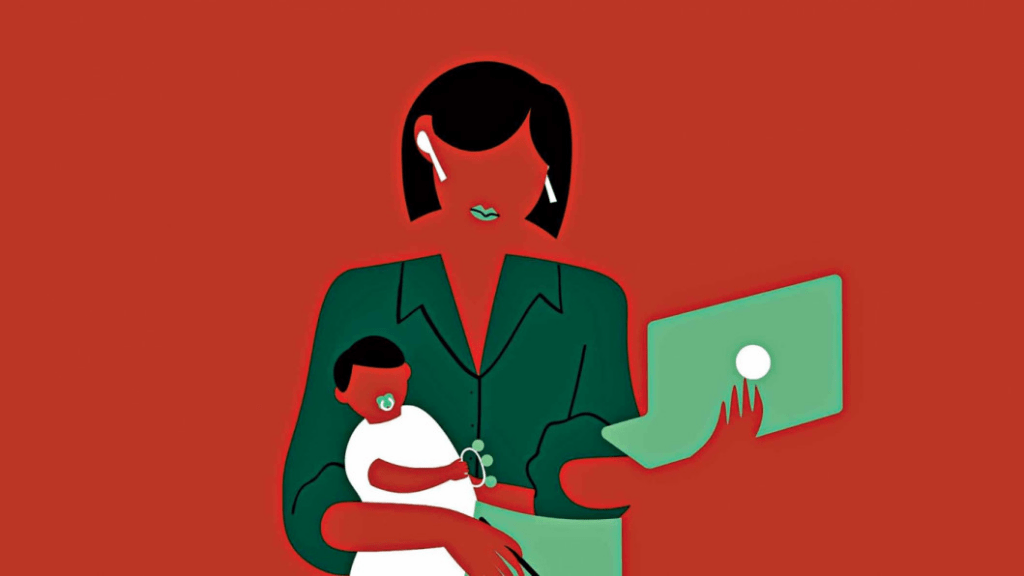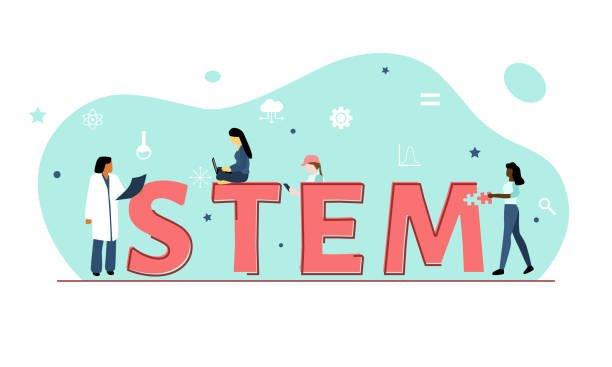One of the most well defined, societally conditioned truths of a woman’s life is motherhood. Girls are almost always raised to accommodate this truth through an upbringing that is centred around taking care of others, often at the cost of their own needs.
I don’t intend to spend the entirety of this article arguing about the toxicity of the maternal hivemind or commenting on the way we raise our children because that is a well-documented issue. What I intend on asking instead is that if maternity is understood as an essential part of a woman’s life, why is the workforce consistently underprepared for managing its responsibilities towards working mothers?
As it turns out, women working in STEM (science, technology, engineering, and mathematics) bear the brunt of what has been termed ‘motherhood penalties’. These have been broadly defined as discriminatory behaviours and workplace enforced barriers that make it more difficult for mothers to continue working their jobs while managing the responsibilities of caring for their children during infancy and early childhood.
These ‘penalties’ include not receiving adequate paid maternity leave, inequities in wages and promotional opportunities throughout and after pregnancy and a general lack of infrastructure to meet their caregiving demands.

It comes as no surprise that 43 per cent of women with full-time STEM careers leave their job when their first child is born. A international survey done by Mothers in Science (MiS) in 2020 found that scientist mothers also suffer a significantly worse productivity drop in their research compared to scientists fathers, a disparity that worsens over time.
Psychologists have actually given this pressure a name; “cognitive load”. In simple terms, cognitive load describes the intrinsic and invisible stressors that women face in both their roles as caregivers in the home and employees in the workforce. The mental load is about making sure families and teams are thriving emotionally, physically, and financially which is an enduring, high stakes, and deeply emotional responsibility
Nine years after their first child’s birth, women were publishing 10 fewer papers than men and were 3 times more likely to be denied promotional opportunities. The consequences of these penalties have only exacerbated the severity of female underrepresentation in STEM fields and higher levels of academia. While the statistics make a serious case, it is important to ask why this fallout occurs both at the systemic and personal level.
Culturally, STEM fields are often less tolerant and supportive of caregiving responsibilities than other occupations. There are overwhelming expectations of work productivity, often at the cost of personal life, a standard that is more difficult for women to meet during and after pregnancy.
Even before they become mothers, women are regularly tasked with managerial, teaching and administrative burdens that often have nothing to do with their professional roles, but everything to do with gender roles in the professional environment.
Also read: The Matilda Effect: When Women In STEM Are Sidelined Due To Gender Bias

Once the responsibility of a child enters their life, women continue to fight to retain or earn back their credibility which is not only incredibly taxing, but also means hiding the reality of family life from their supervisors and colleagues to avoid judgment and poor evaluations that slow their career progression. Despite their tenacity, intelligence and resilience, women buckle under this pressure.
Psychologists have actually given this pressure a name; “cognitive load”. In simple terms, cognitive load describes the intrinsic and invisible stressors that women face in both their roles as caregivers in the home and employees in the workforce. The mental load is about making sure families and teams are thriving emotionally, physically, and financially which is an enduring, high stakes, and deeply emotional responsibility.
Mothers also need to be provided with more independence and options in the roles they play as employees, especially as they transition back into the working environment. Most importantly, there needs to be a culture shift in the world of STEM that values the caregiving responsibilities of scientist mothers and works to empower their ingenuity, talent and passion for the advancement of STEM as a discipline
What distinguishes this idea of cognitive load from other explanations of caregiver/mom burnout is how elegantly it explains the lack of involvement of men in helping manage this load both in the home and the workplace. While many fathers and male teammates are inclined to help their female partners or co-workers, women are still bearing full responsibility of planning, organising and managing tasks and still need to instruct their male counterparts on what to do.
Oftentimes, explaining or showing how something needs to be completed is more time consuming so women end up having to do most of the work independently, never receiving credit or compensation for pushing themselves. Adding race and ethnicity to the mix does not help either.
Racialised women often have to contend with the mental load of discrimination, imposter syndrome and dispelling racial stereotypes while doing their jobs, a challenge that their White, male counterparts never have to confront. This chronic stress leads to severe health consequences for women, which (surprise!) they also navigate alone due to a lack of mental health support and sensitised understanding of such issues in their workplace.

It goes without saying that a large part of supporting women’s health is helping them navigate the process of pregnancy and post-natal care for both the infant and themselves. This is an intensive and critically important period in the infant-mother relationship timeline as the health of both individuals is contingent on adequate care and support.
For working women in STEM, this is a significant barrier to confront. So how can we help? Well, an important first step is to make amendments to parental leave policy that not only provide pay and flexible parameters for women, but also normalise paternal leave so men can prioritise supporting their partner in childcare.
Mothers also need to be provided with more independence and options in the roles they play as employees, especially as they transition back into the working environment. Most importantly, there needs to be a culture shift in the world of STEM that values the caregiving responsibilities of scientist mothers and works to empower their ingenuity, talent and passion for the advancement of STEM as a discipline.
Also read: Women In STEM: Digital Technology Can Aid In Reducing Gender Gap
Editor’s note: This article is part of a collaboration with LotusSTEMM. LotusSTEMM is a registered non-profit organization in Canada that focuses on increasing visibility and representation of South Asian women in Science, Technology, Engineering, Mathematics and Medicine (STEMM) by providing hands on STEM outreach, creating mentorship and networking, and conducting research within the community. To learn more, please visit: www.lotusstemm.org




